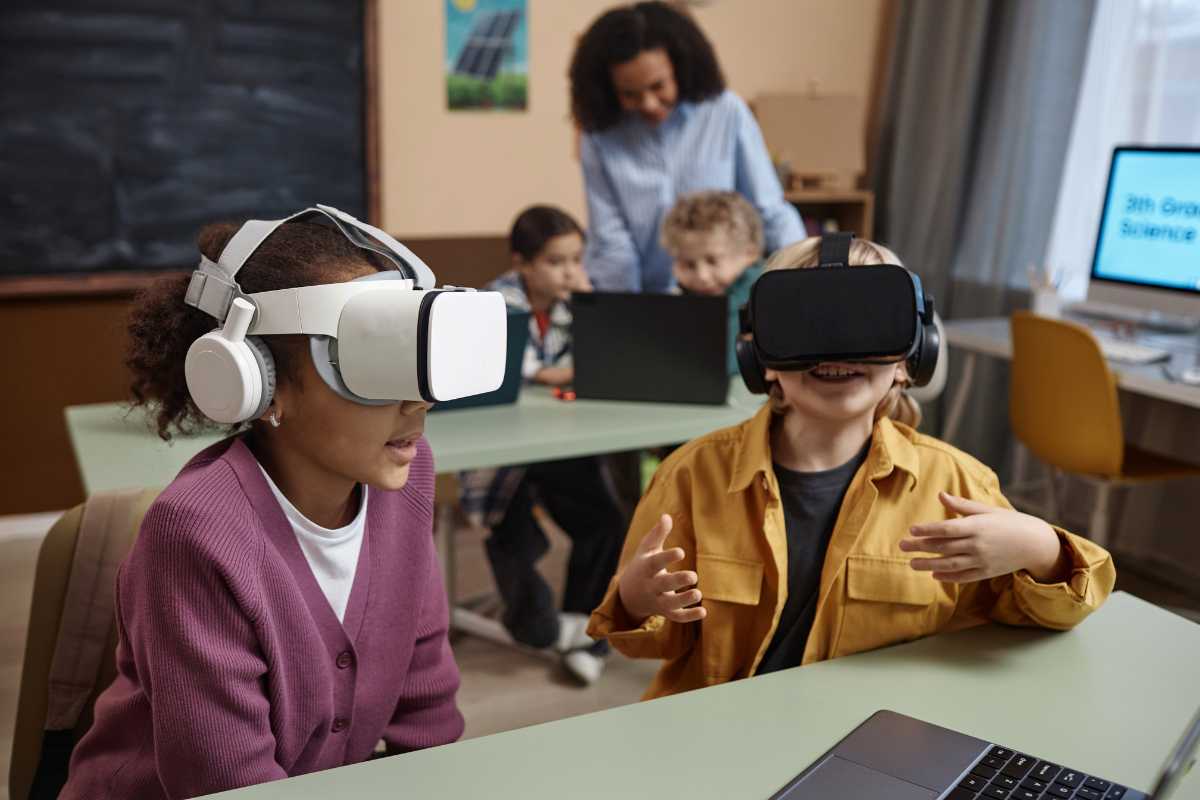From Textbooks to Holograms: How AR in Education Is Revolutionizing Learning Experiences
Introduction
For centuries, the textbook has been the cornerstone of education, guiding generations of students through the world of knowledge. Yet, as we move deeper into the digital age, education is undergoing a radical transformation. Augmented Reality (AR)—a technology once associated with video games and entertainment—is now reshaping classrooms across the globe. By blending digital information with the physical world, AR enables immersive, interactive, and highly personalized learning experiences that go far beyond static pages in a book.
In 2025, AR in education is no longer an experimental tool; it is becoming mainstream, empowering teachers and students alike. From holographic dissections of the human body to interactive history lessons that bring ancient civilizations to life, AR has the potential to make learning engaging, inclusive, and future-ready. This article explores how AR is revolutionizing education, its benefits, challenges, and what lies ahead.
What Is Augmented Reality in Education?
Augmented Reality overlays digital content—such as 3D models, videos, and holograms—onto the real world via smartphones, tablets, AR glasses, or headsets. Unlike Virtual Reality (VR), which immerses users in a fully virtual space, AR enhances physical learning environments by adding interactive elements.
For example, a student studying chemistry can point their device at a molecule diagram and see it expand into a 3D, interactive structure. Similarly, history students can walk through a virtual reconstruction of the Roman Colosseum while still sitting in their classroom.
Why AR Is a Game-Changer in Education
1. Turning Passive Learning into Active Exploration
Traditional learning often relies on memorization and rote learning. AR shifts the focus to experiential learning, where students engage directly with the material. By “doing” instead of just “reading,” students retain information more effectively.
2. Bridging the Gap Between Theory and Practice
Complex subjects like anatomy, physics, or architecture become more accessible when visualized in 3D. For instance, medical students can practice surgeries on AR models before stepping into real operating rooms.
3. Enhancing Engagement and Motivation
Students raised in the digital era crave interactivity. AR brings excitement to the classroom, capturing attention and motivating learners who may otherwise struggle with traditional methods.
4. Inclusivity in Education
AR can accommodate different learning styles—visual, auditory, and kinesthetic. It also supports special education by creating tailored experiences for students with learning disabilities or sensory challenges.
5. Global Accessibility
With affordable mobile devices and AR apps, students from underserved communities can access quality educational resources, narrowing the global learning gap.
Real-World Applications of AR in Education
1. Science and Medicine
AR allows students to explore the human body in 3D, perform virtual dissections, or simulate chemical reactions without physical labs. Apps like HoloAnatomy are revolutionizing medical education.
2. History and Social Studies
Instead of reading about historical events, students can experience them through AR simulations—watching the signing of the Declaration of Independence or exploring ancient Egypt in holographic form.
3. Mathematics
AR apps can transform equations and geometry problems into interactive 3D models, helping students grasp abstract concepts with visual clarity.
4. Languages and Literature
Interactive AR storybooks bring characters to life, while AR translation tools help students learn foreign languages through contextual, real-world experiences.
5. Engineering and Architecture
Students can design, manipulate, and visualize structures in real-time 3D environments, testing ideas before implementing them in the real world.
6. Early Childhood Education
Interactive AR games can make foundational learning—like numbers, letters, and shapes—fun and engaging for young learners.
Benefits for Teachers and Institutions
- Dynamic Teaching Tools: AR allows teachers to explain abstract concepts more effectively.
- Student-Centered Learning: Teachers can adapt lessons to students’ pace, creating more personalized learning environments.
- Cost Savings: Virtual labs and AR simulations reduce the need for expensive equipment and materials.
- Global Collaboration: AR classrooms can connect students from different countries in shared, interactive learning experiences.
Challenges to Overcome
1. Cost of Implementation
AR hardware and software can be expensive, limiting accessibility for schools with constrained budgets.
2. Digital Divide
Not all students have access to devices or reliable internet, which can widen existing educational inequities.
3. Teacher Training
Effective AR integration requires teachers to be trained in using the technology, which takes time and resources.
4. Content Availability
While AR content is growing, some subjects still lack comprehensive AR-based learning materials.
5. Screen Time Concerns
Excessive screen use raises concerns about eye strain, attention span, and overall student health.
Case Studies: AR in Action
1. Medical Schools in the U.S.
Universities are using AR to allow students to explore human anatomy in depth without cadavers, saving costs and improving learning outcomes.
2. Classrooms in South Korea
AR-enabled smart classrooms allow students to visualize history, geography, and science lessons in highly interactive ways, boosting engagement.
3. EdTech Startups
Companies like zSpace, Merge Cube, and Google Expeditions are making AR tools accessible for K-12 and higher education worldwide.
The Future of AR in Education
1. Mainstream Adoption
As hardware costs fall, AR will become as common as projectors and whiteboards once were.
2. Integration with AI
Artificial Intelligence will enhance AR experiences by adapting content to each student’s learning style and progress.
3. Collaboration with VR and XR
AR will not replace but complement Virtual Reality (VR) and Extended Reality (XR), creating a blended immersive learning ecosystem.
4. Workforce Training
Beyond classrooms, AR will dominate vocational training, from flight simulations for pilots to equipment training for factory workers.
5. Global Equity in Learning
AR has the potential to democratize education, making advanced learning experiences available in rural and underserved regions.
How Institutions Can Prepare
- Invest in Infrastructure: Schools and universities must upgrade internet access, devices, and software.
- Train Teachers: Professional development programs are key to ensuring educators maximize AR’s potential.
- Collaborate with EdTech: Partnerships with technology companies can reduce costs and expand access.
- Prioritize Equity: Ensure AR tools reach marginalized communities to prevent widening the digital divide.
- Encourage Experimentation: Pilot programs can help institutions evaluate AR’s impact before large-scale rollouts.
Conclusion
The shift from textbooks to holograms marks more than just a technological upgrade—it signals a new era of learning that is interactive, inclusive, and transformative. Augmented Reality has the power to turn classrooms into gateways of exploration where knowledge is not only consumed but experienced.
As AR continues to evolve, the future of education will not be defined by memorizing facts but by immersing students in environments that inspire curiosity, creativity, and critical thinking. For societies aiming to build resilient, future-ready citizens, investing in AR in education is not just an option—it is an imperative.
The classroom of tomorrow is here, and it is holographic.













